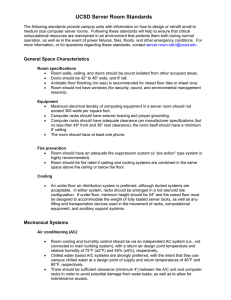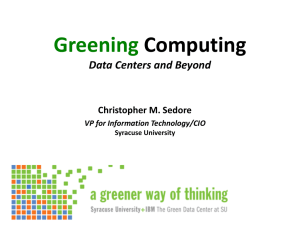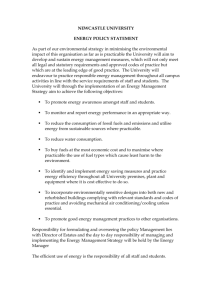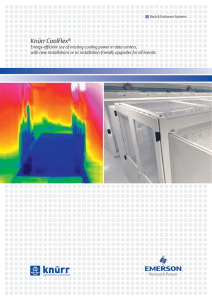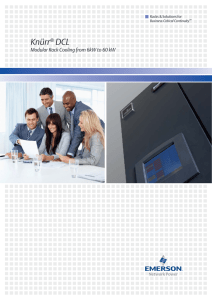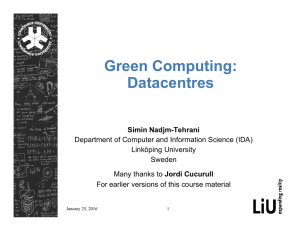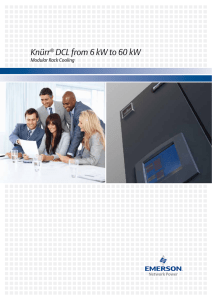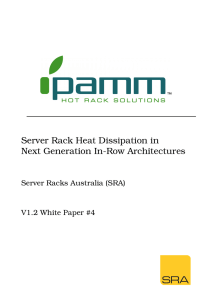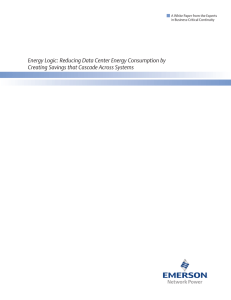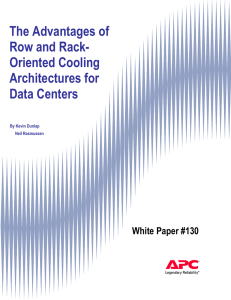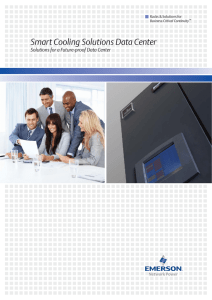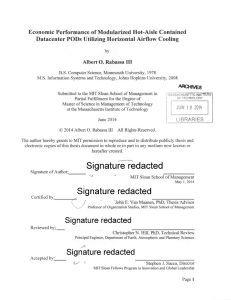Computer Room Design
advertisement
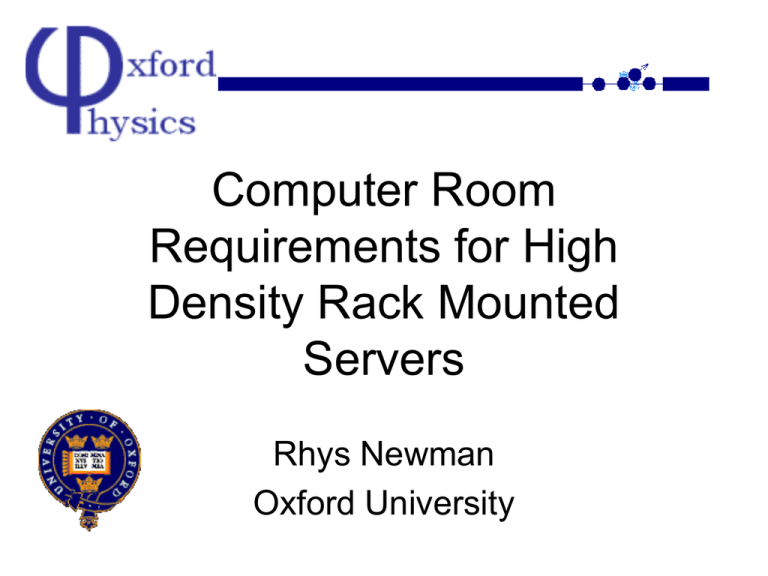
Computer Room Requirements for High Density Rack Mounted Servers Rhys Newman Oxford University Outline • Why do we need computer rooms? – Why in the past. – Why in the future. • Design of the environment. – Cooling – Humidity – Power • Proposal at Oxford Physics • Conclusion Why do we need them (Past) • Security – Equipment is valuable. • Convenience – Specialist Knowledge is needed to look after them. – Networking was relatively difficult. • Bulk – A single (useful) installation was large Why we need them (future) • Specialist Environmental Requirements – High density implies more sensitive. • Convenience – Human time cost of software maintenance. Will be needed for the immediate future, but the Grid will reduce the need long term. Cooling - Then • Rack mounting designed to get high CPU density – optimise space usage given the effort needed to allocate secure facility. – Until recently, maximum power usage was about 2-3kw per rack. – Air cooling sufficient, cool air taken directly from under the floor. – Even conventional air conditioning on the ceiling was often enough. Cooling Now: too much Success! • Modern 1U servers are 300W heaters => 12KW per rack (18KW for blade servers). • Rule of thumb: 1000 litres/sec of cool air can handle 12KW. – In detail a Dell 1750 uses 1200 l/min. • For 40 racks, this is 32000 l/sec which in a typical 600mm duct is a wind speed of 320km/hr! Cooling - Solutions • Focus on airflow! – Place racks in rows – hot aisle, cold aisle. – Leave doors off the racks. – Identify hotspots statically, or dynamically (HP smart cooling). • Rule of thumb: air cooling can manage 1200W/m2 Major Problem – no bang for buck • As the processor speeds increase => • They get hotter => • Fewer can exist per sqr metre => • Overall CPU power in datacentre goes DOWN. All this irrespective of how well you design the air cooling systems! Cooling Solution II • Try self contained systems. • Try water cooled units (self contained or otherwise). • Use “smarter” systems which actively manage hotspots. HP smart cooling claims to get up to 2.5KW/m2 in this way (??). Humidity • Computers (in a datacentre) have tighter tolerances than humans – 45%-55% (despite manufacturer limits of 8%-80%). – Too low, risks static eletricity (fans in the computers themselves cause this). – Too high, localised condensation, corrosion and electrical short. Note: Zinc in floor tiles! • Air conditioning units must be better than for normal offices – how many rooms use conventional units? No magic bullet of simply importing external air and venting it to the outside!!! Power • All this heat comes from the power supply – 1.2A per server – 50A per rack – 4000A for a 40 rack centre • And for the cooling systems, a total of 5000A => 1.25 MW. Summary so far…. • Modern machines need a well designed physical environment to get the most out of them. Most current facilities are no longer well suited (a recent thing). – Intel scrapped 2 chip lines to concentrate on lower power chips, rather than simply faster. – Sun (and others) are working on chips with multiple cores and lower clock speeds (good for internet servers, not so good for physics!). • The cost of the surrounding room is a substantial cost of the entire facility. Example: 40 Racks for Oxford • We have an ideal location – Lots of power – Underground (no heat from the sun and very secure). – Lots of headroom (false floor/ceiling for cooling systems) – Basement • no floor loading limit • Does not use up office space. Bottom Line • The very basic estimate for the room, given the shell, is £80k. • Adding fully loaded cooling, UPS, power conditioning, fire protection etc will probably take this to £400k over time. • Cost of 40 racks ~ £1.6 million • Infrastructure costs: 25% of setup and up to 50% of running costs. Hang on! • There are about 50000 computers already in Oxford university alone. • Assume 20000 are OK. • Already have a major data centre, with essentially no infrastructure problems! • The problem is software – the Grid will exploit these resources and thereby save millions in datacentre costs – medium term! Thank you! • Sun has a detailed paper at: http://www.sun.com/servers/whitepapers/dc-planning-guide.pdf • APC has a number of useful white papers: http://www.apc.com/tools/mytools/


